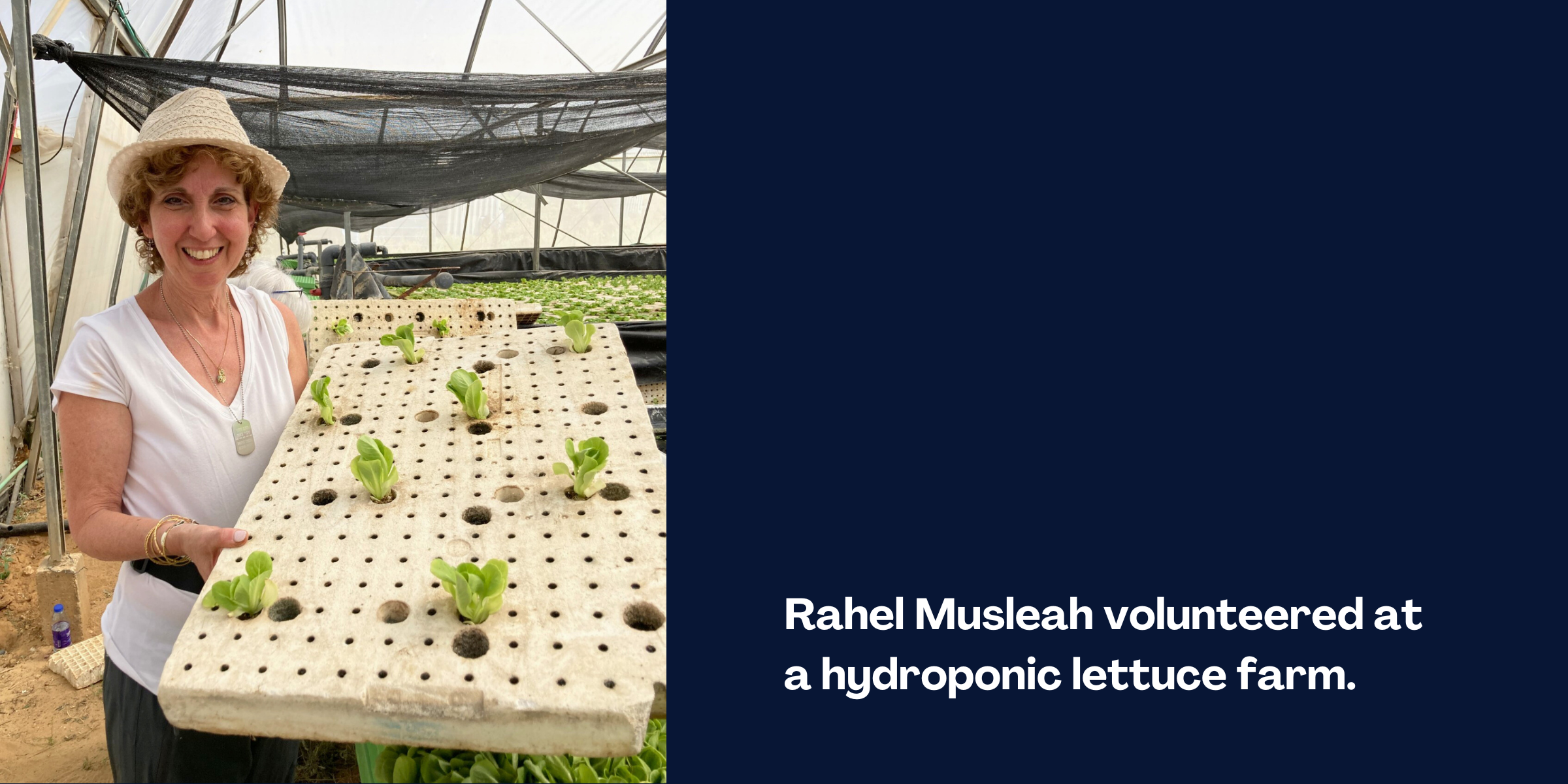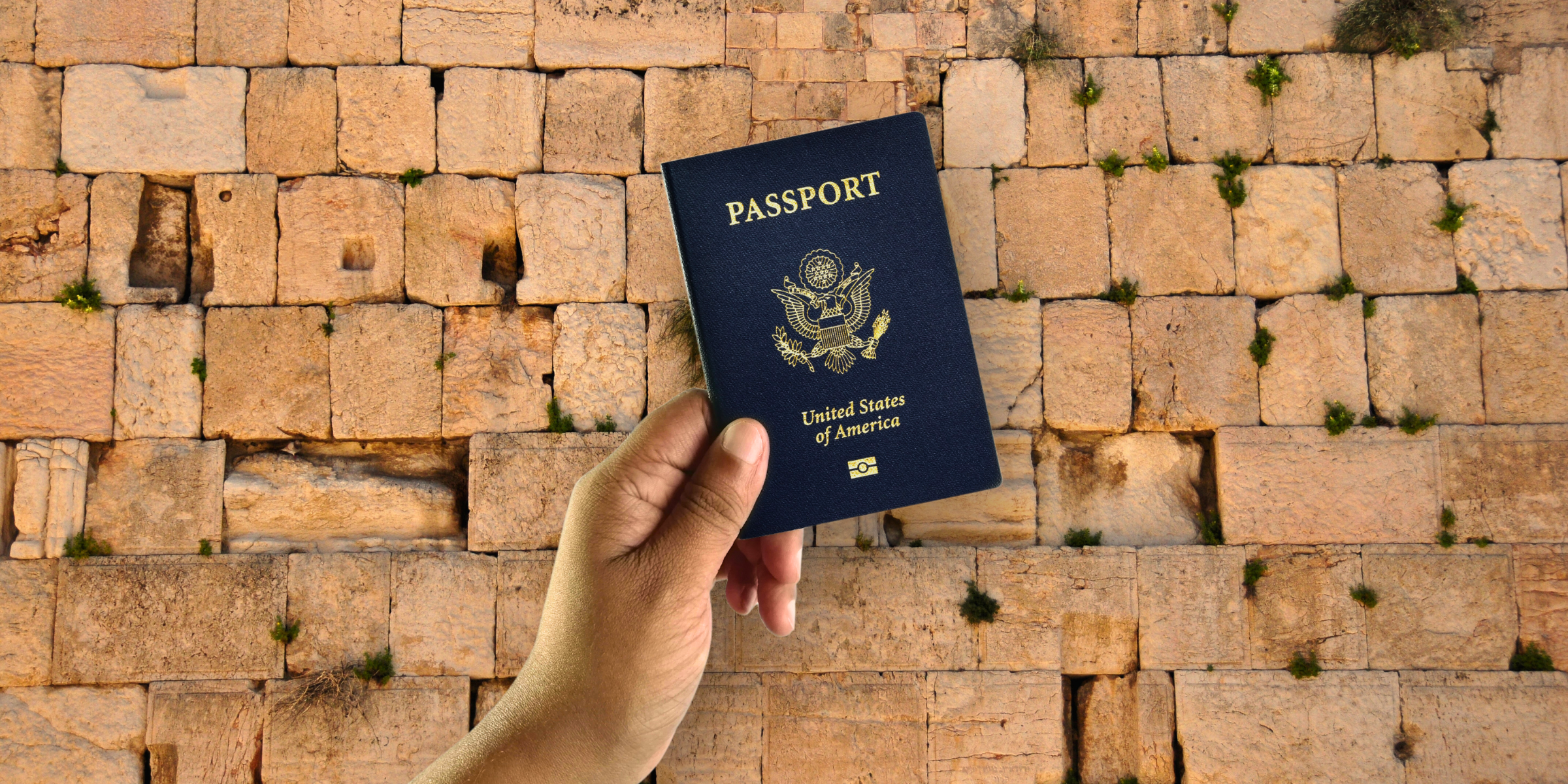The Jewish Traveler
Passport Zionism
At the site of the Nova music festival in southern Israel, where Hamas murdered 401 people and abducted 44, I met an Israel Defense Forces reserve soldier named Tzvi, who was on a brief leave from serving in Gaza.
“Each time before I go in and when I go out, I try to come here,” he said. “This is a holy site for me. I come here to remind myself why we’re doing what we’re doing.”
My encounter with Tzvi was one of countless profound experiences during a five-day Melton Travel solidarity mission in June 2024, followed by a week on my own in Jerusalem. I hadn’t been to Israel in 10 years—I have been busy with my own Jewish India tour company—but after October 7, I felt an intense yearning to return.
During that first week, I listened to the harrowing testimony of survivors, visited memorials and volunteered with my hands and heart. I prepared salad and barbecue at Shuva Achim, a refreshment stop for soldiers near the Gaza border; helped build upcycled furniture for displaced families; and volunteered at a vineyard and a hydroponic lettuce farm whose foreign and Israeli workers had left.
This type of tourism—dubbed “voluntourism”—has brought visitors to Israel during this crisis, when typically jam-packed tourist sights are empty. Indeed, the war has hit Israeli tourism hard. From January 2024 through August 2024, 226,000 Americans traveled to Israel, compared to 643,000 during that period in 2019, before the pandemic slowed tourism for several years. Most international airlines have suspended flights to Israel, so even getting there has become much harder.

For my week in Jerusalem, where I had lived for a year from 1979 to 1980 and visited numerous times since, I booked an Airbnb situated on the edge of the Mahane Yehuda shuk. On Friday, the market was crowded, but on my daily visits, the aisles were easy to negotiate. I delighted in the irresistible aroma of chocolate rugelach wafting from Marzipan, the legendary bakery. At other stalls, merchants proffered slivers cut from tall domes of flavored halvah and sips of teas with floral, herbal and spice infusions.
The Kotel, lit up so that it glowed against the dark night, still thronged with visitors, but only a handful of tourists walked up and down an eerily quiet Ben Yehuda Street. None of the usually rollicking entertainers were present; instead, an enthusiastic Korean singing group made up of students from Hebrew University serenaded the few passersby.

Jerusalem’s whimsical doors, windows and gates had enticed me to wander its alleys many years ago, photographing relentlessly. My obsession continued on this trip. In the Nachlaot and Yemin Moshe neighborhoods, every corner revealed entrances and shutters painted in brilliant teal and turquoise, vivid indigo, forest green and unexpected lavender.
I visited three new cultural institutions. The Tower of David Museum, reopened in June 2023 with a permanent exhibition spanning 10 galleries, provided an archeological perspective on the history of the city, a 360-degree view of Jerusalem and plenty of opportunities for exploring the citadel’s ramparts. Just down the road, I was the solitary visitor to the Edward and Helen Mardigian Museum of Armenian Art and Culture. I was horrified to learn how little I knew about the Armenian genocide of 1915.
And at the new home of the National Library of Israel, I pored over priceless manuscripts, including the only surviving copy of the first Haggadah ever printed—in Spain in 1482—and Naomi Shemer’s handwritten notes for her classic song, “Yerushalayim Shel Zahav.”

Brief conversations with Israelis that might otherwise have felt mundane or perfunctory moved me deeply. Everyone answered my questions openly and honestly, inviting me to their homes—if not on this visit, then the next one—and expressing gratitude that I was there.
The pre-Shabbat Israeli dancing I remembered in the city center no longer took place, but arriving in the afternoon for a Shabbat dinner at a cousin’s apartment, I suddenly heard music outside. I ran downstairs to check out what I thought was a children’s birthday party in a play area. It turned out to be a neighborhood Kabbalat Shabbat for young families, with a guitarist singing popular Israeli songs, a potluck meal and dancing. I joined in the singing, entranced by the normalization of Shabbat.
Speaking Hebrew again filled my heart with love for this language unparalleled in its spiritual power, biblical resonance and contemporary inventiveness. Months later, I have left Waze programmed to talk to me in Hebrew, guiding me to turn yamina, right, or smolah, left.

On my last day in Israel, I tucked a box of cookies and a container of cut-up veggies into my bag and took a bus to the new Gandel Rehabilitation Center at Hadassah Hospital Mount Scopus to visit wounded soldiers. I knocked gingerly on open doors, worried about what I would find, but the soldiers welcomed me.
Dvir was wounded in Gaza while covering the windows of a house in which his unit was preparing to rest. Sniper fire penetrated his stomach and colon. “How are your spirits?” I asked in Hebrew. He responded with a simple, “O.K. Much better than before.”
These were different windows and doors than the vibrant ones I had sought out. I thought back to a simple wooden door I had photographed, enhanced with a verse from the Book of Samuel that has become a blessing for the home: “V’ata shalom, u’vetcha shalom, v’chol asher l’cha shalom.”
You are peace, your home is peace and everything you have is peace.
TOURISTS ON A MISSION
A number of travel operators and organizations have pivoted since October 7 to run trips to Israel that offer volunteer agricultural experiences, visits to memorial sites in the Gaza border region such as the Nova festival grounds, hands-on construction work and interactions with prominent Israelis, locals and soldiers, among other activities.
Some of those operators are Melton Travel, Livnot U’Lehibanot: To Build and Be Built, the Jewish National Fund, Authentic Israel and Taglit Birthright through its Israel Onward Volunteer Program. Other distinct experiences include:
• Hadassah has sent multiple delegations to Israel since October 7 and plans to do so again in February with its “Israel in Full Bloom Tu B’Shevat & Darom Adom” itinerary. Hadassah trips include visits to Hadassah Medical Organization facilities.

• The Emergency Volunteer Project (EVP) in conjunction with the Israel Defense Forces arranges six- or 11-day programs providing IDF front-line units with fresh food, including falafel, burgers, schnitzel and salads. Volunteers train in EVP food preparation, receive dog tags and uniforms and meet with soldiers.
• Leket Israel gives volunteers the chance to pick fruits and vegetables to help Israeli farmers who were drafted into the reserves or lost their workers after October 7.
• Second Line is a program for mental health professionals formed in the aftermath of October 7 in collaboration with the Israel Ministry of Health and the Israel Trauma Coalition and supported by the Jewish Federations of North America and Birthright. In the Direct Care program, volunteers spend six weeks to three months working with Israelis suffering from anxiety or trauma. Remote-care and longer-term programs are also available.
• Sar-El: The National Program for Volunteering in Israel organizes volunteers to help on IDF bases, including through its special tracks for parents of Lone Soldiers and its new first aid-focused partnership with Magen David Adom.
• Ruach Tova pairs volunteers looking for one-time experiences as well as longer-term commitments with organizations dedicated to helping the needy, children or the elderly, or working on behalf of the environment or animals in need.
• Skilled Volunteers for Israel, a longtime group that connects retirees with volunteer opportunities, maintains an online listing of Israeli organizations actively recruiting help.
• Join the Sword of Iron-Israel Volunteer Opportunities group on Facebook to search up-to-the-minute postings of businesses and groups throughout Israel in need of volunteers.
Rahel Musleah leads in-person and virtual tours of Jewish India and other cultural events.











 Facebook
Facebook Instagram
Instagram Twitter
Twitter
Leave a Reply